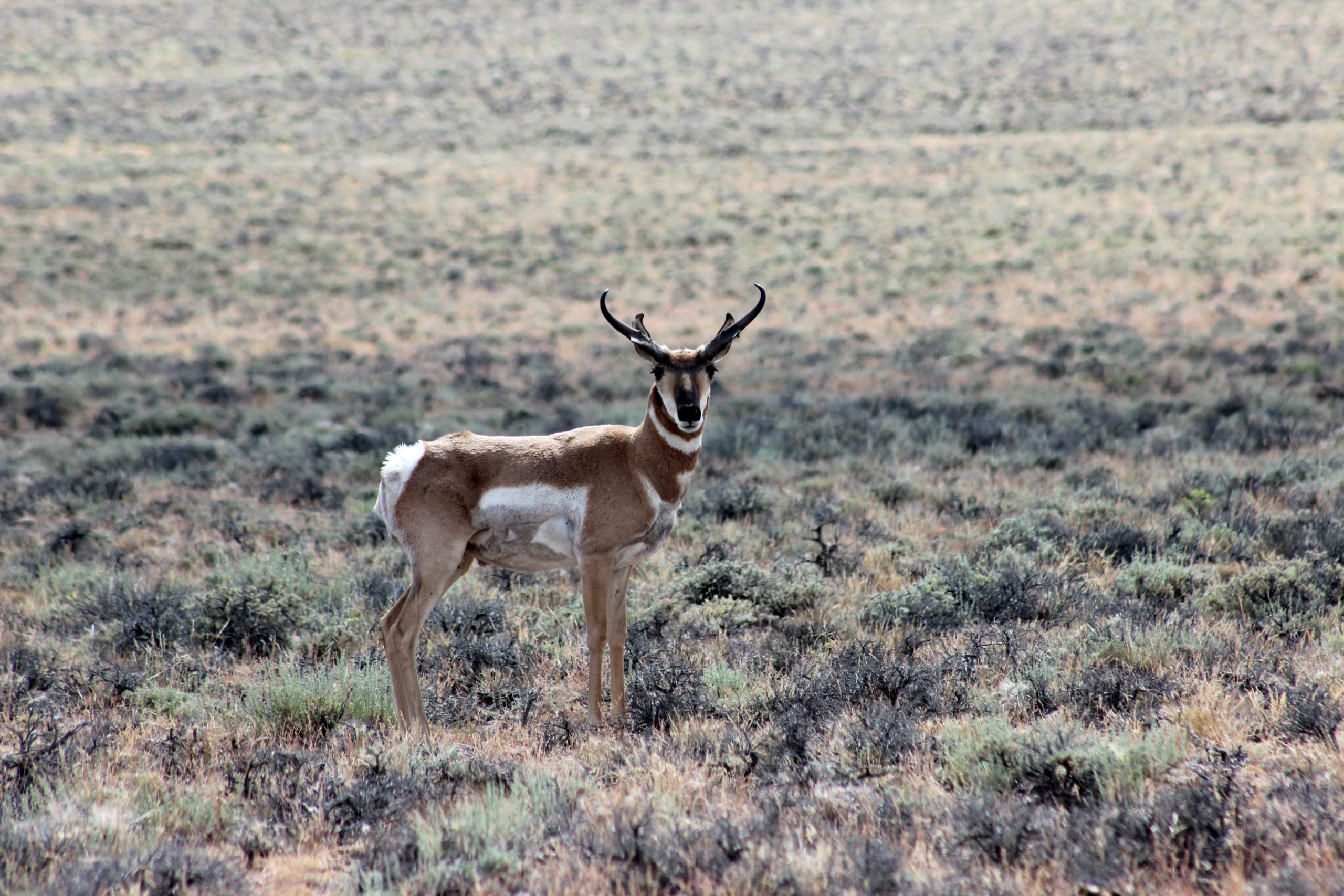In southeast Oregon, herds of pronghorn migrate between two key wildlife refuges. Oregon Desert Land Trust is working to conserve private lands in the corridor that connect summer and winter feeding grounds.
“Speed goats.” “Prairie racers.” “Sage rockets.” The blazing speed of pronghorn antelope (up to 60 miles per hour) is legendary, resulting in some amusing nicknames and the title of North America’s fastest land animal. Pronghorn thrive in the sagebrush sea of Oregon’s high desert, where unobstructed views help these exotic-looking creatures spot and easily outrun predators.
The Oregon Department of Fish and Wildlife estimates there are roughly 25,000 pronghorn in the state. Pronghorn populations have been steadily growing thanks to careful management and conservation efforts.
One hundred years ago, the future of pronghorn looked more dire. Once numbering in the tens of millions, the pronghorn population in the United States had plummeted to just 13,000 by 1915. Overhunting and habitat loss had placed this species in serious jeopardy. Determined to save antelope from the fate of the American buffalo, in 1936, president Franklin D. Roosevelt signed an executive order to establish two key antelope refuges.

Two antelope fawns explore the sagebrush sea near Hart Mountain. Photo by Jim Davis
Where the antelope play
Although these two refuges were established in different states, they are jointly managed by the US Fish and Wildlife Service. Hart Mountain National Antelope Refuge in southern Oregon is 278,000 acres. Just across the border in Nevada, Sheldon National Wildlife Refuge is 575,000 acres.

The Hart-Sheldon Refuge Complex totals more than 850,000 acres. Photo by Jim Davis
A critical corridor
The Hart Mountain Refuge and Sheldon National Wildlife Refuge are separated by a 20-mile wide strip of land. Antelope criss-cross this strip in the spring and fall, spending the summers at higher elevations at Hart Mountain, and then moving to lower-elevation winter feeding grounds at Sheldon.
Biologists have been tracking Oregon’s pronghorn herds to better understand the herds’ migration routes and patterns. Over the course of their seasonal migration, the herds travel more than 100 miles and utilize roughly 3 million acres.

Spring brings new pronghorn fawns. Migration is underway by early summer, with herds traveling 100 miles or more. Photo by G. Burke
The corridor connecting the Hart-Sheldon Refuge Complex is vulnerable to development, fire, drought, and habitat degradation. Recognizing the critical importance of this corridor for wildlife, the Oregon Desert Land Trust has acquired several parcels in the area totaling nearly 2,000 acres. These lands contribute to addressing land management across the region.
For example, the Land Trust is partnering with the University of Oregon and state and federal land managers to site a fire detection camera on our Beatys Butte property. This camera will aid fire managers in critical decision-making processes and help to provide a safe, effective, and efficient response. This timely and accurate information can lead to increased safety for firefighters, residents, public users, and less acres impacted by wildlife in sensitive areas.
Exploring the corridor
Oregon Desert Land Trust Board member Helen Harbin was inspired to follow the antelope migration route from Sheldon to Hart Mountain on a five-day, 55-mile hike in 2021. At 5,000 to 6,000 feet in elevation, the climate is harsh and the landscape rather barren—but with boots on the ground, she discovered a surprising degree of diversity.
The antelope trails run through the Jack Creek drainage area, where the water supports a richer variety of plant life and provides crucial forage for antelope herds. Along with gorgeous rock formations, the area is also home to some of the oldest known rock art in North America.
Helen and two fellow hikers had a dual purpose—to have an adventure and also to raise awareness on behalf of the pronghorn. The hike is featured in a short video, “Sagebrush Sisters,” produced by Wahoo Films.



